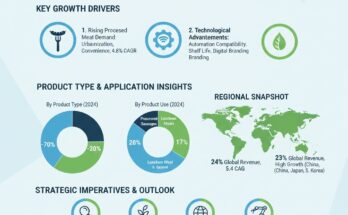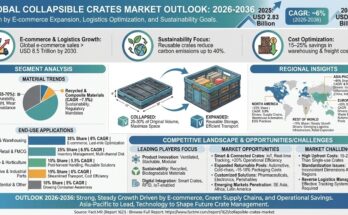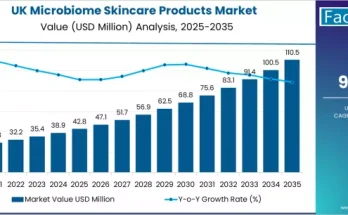As per a recently published report by Fact.MR, a market research and competitive intelligence provider, the global baby gates market is anticipated to hold valuation of US$ 747.3 Mn in 2022, and expand at an impressive CAGR of 5.6% over the forecast period of 2022 to 2032.
The market registered annual growth of 3.9% during 2017-2021. Fact.MR anticipates significant potential in the market due to enhanced spending by consumers on baby safety and convenience products.
In the active routine of urban parents, taking care of new-borns requires special attention. Parents are willing to pay for baby safety products that provide a safe environment. Growing urbanization and the high proportion of babies in some regions have created a fertile ground for baby safety product manufacturers to expand their market share.
In urban areas, people prefer to reside in a nuclear family rather than in a joint family, mainly due to job streams. Today, not many infants in cities live with their grandparents, leading to the complete dependence of families on baby safety products. Child safety products have significantly diminished the workload in daily infant care routines. For instance, baby gates at several dangerous places in a house can keep infants in the same premise and prevent accidents.
Baby gates, which have become increasingly popular as a product to ensure the safety of children from unexpected hazards, is expected to gain traction in the market, and is expected to push sales to around US$ 1.29 Bn by the end of 2032.
Key Takeaways from Market Study
- Bar gates are likely to hold a market share of 75% by the end of 2032.
- Based on installation type, hardware mounted and banister mounted baby gates are likely to hold market shares of around 56.1% and 19.1%, respectively, by 2032.
- Demand for with locks baby gates is likely to increase at a CAGR of 6.1% over the forecast period of 2022–2032.
- Based on region, demand for baby gates is expected to expand at CAGR of 6% and 6.5% in East Asia and South Asia & Oceania, respectively, over the forecast period.
- Together, North America and Europe are likely to represent 66.9% of global market share in 2022.
“Rising need of enhanced safety of babies is expected drive the adoption of baby gates across geographies,” says a Fact.MR analyst.
Augmented Consumer Spending on Baby Care Products Being Witnessed
Over the years, average consumer spending on baby care products has increased. On an average, consumers spend more than US$ 75 per month on baby care products. This spending includes products such as disposable diapers, accessories, wipes, baby safety, and convenience products.
As such, it is anticipated that spending on baby safety and convenience products comprising baby gates is likely to increase over the coming years, thereby supporting baby gates market growth going forward.
Market Developments
Companies and brands associated with baby gates are improving their products. This is attributed to consumers becoming increasingly aware of about the risks associated with poorly-installed baby gates.
Market participants are improving their brand presence through aggressive promotional activities. Industry frontrunners have captured a significant market share through robust distribution networks and integrated sales channels, avoiding margin leakage. Long-term partnership across sales channels has enabled manufacturers to generate consistency in demand.
Request Sample Report
More Valuable Insights Available
Fact.MR, in its new offering, presents an unbiased analysis of the global baby gates market, presenting historical market data (2017-2021) and forecast statistics for the period of 2022-2032.
The study reveals essential insights by gate type (bar gates, retractable gates), lock system (no locks, with locks), installation type (free standing, hardware mounted, pressure mounted, banister mounted), installation location (standard doorways, stairways, extra wide spaces), gate width (<24 inches, 24-36 inches, 37-48 inches, 49-60 inches, >60 inches), age group (0-3 months, 3-9 months, 9-12 months, 12-18 months, 18-24 months, >24 months), material (plastic, wooden, metallic, others), end use (residences/household, institutional/commercial), and sales channel (offline sales, online sales), across major regions of the world (North America, Latin America, Europe, East Asia, South Asia & Oceania and Middle East & Africa).
Fact.MR’s Domain Knowledge in Consumer Goods Division
Expert analysis, actionable insights, and strategic recommendations of the highly seasoned consumer goods team at Fact.MR helps clients from across the globe with their unique business intelligence needs.
With a repertoire of over thousand reports and 1 million-plus data points, the team has analysed the consumer goods division across 50+ countries for over a decade. The team provides unmatched end-to-end research and consulting services. Reach out to explore how we can help.
For more information, refer to our market research report or contact the PR author.



